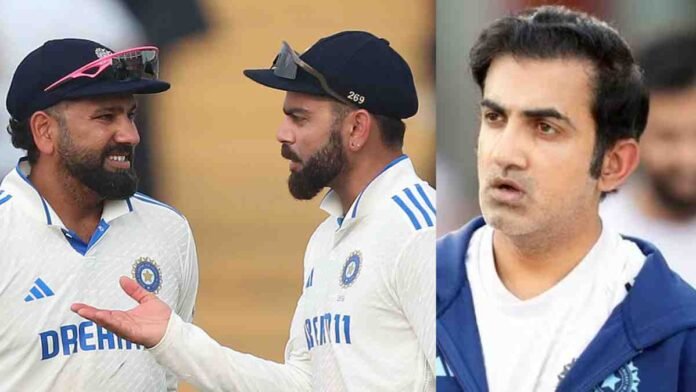The sudden departure of Rohit Sharma and Virat Kohli from India’s Test setup may have taken many by surprise, but emerging reports suggest that their exit was not entirely unforeseen. Their declining form during the latter stages of the previous ICC World Test Championship cycle, particularly during India’s rare home whitewash against New Zealand and the disappointing loss of the Border-Gavaskar Trophy in Australia, had already sparked speculation. These setbacks ultimately cost India a place in the WTC final, setting the stage for major changes.
According to a report by the news agency PTI, newly appointed head coach Gautam Gambhir had been clear in his intentions from the start. He wanted to break away from the “star culture” in the team and introduce a new generation of cricketers. “The Gautam Gambhir era begins now. He was categorical that during the next WTC cycle, India need to have fresh faces,” a BCCI official disclosed to PTI, speaking on the condition of anonymity.
This vision of change was not Gambhir’s alone. His approach found strong support from the chairman of selectors, Ajit Agarkar. “Everyone, associated with decision making knew where Gambhir stood in terms of carrying seniors in the longest format. Obviously his and chairman of selectors Ajit Agarkar’s thoughts aligned,” the source added.
What is particularly notable about this shift is the change in power dynamics within the team’s leadership. Traditionally, the captain has had the final word on team matters. However, with two of India’s senior-most players stepping aside, Gautam Gambhir’s role has taken center stage, positioning him as the most influential figure in shaping the team’s future.
The report further reveals that Gambhir sought a formal mandate from the BCCI, urging the board to give him sufficient authority to ensure past failures, such as the Border-Gavaskar and New Zealand series losses, are not repeated. As India embarks on a new Test cycle, all eyes will be on the fresh faces that Gambhir champions and the legacy he aims to build.




